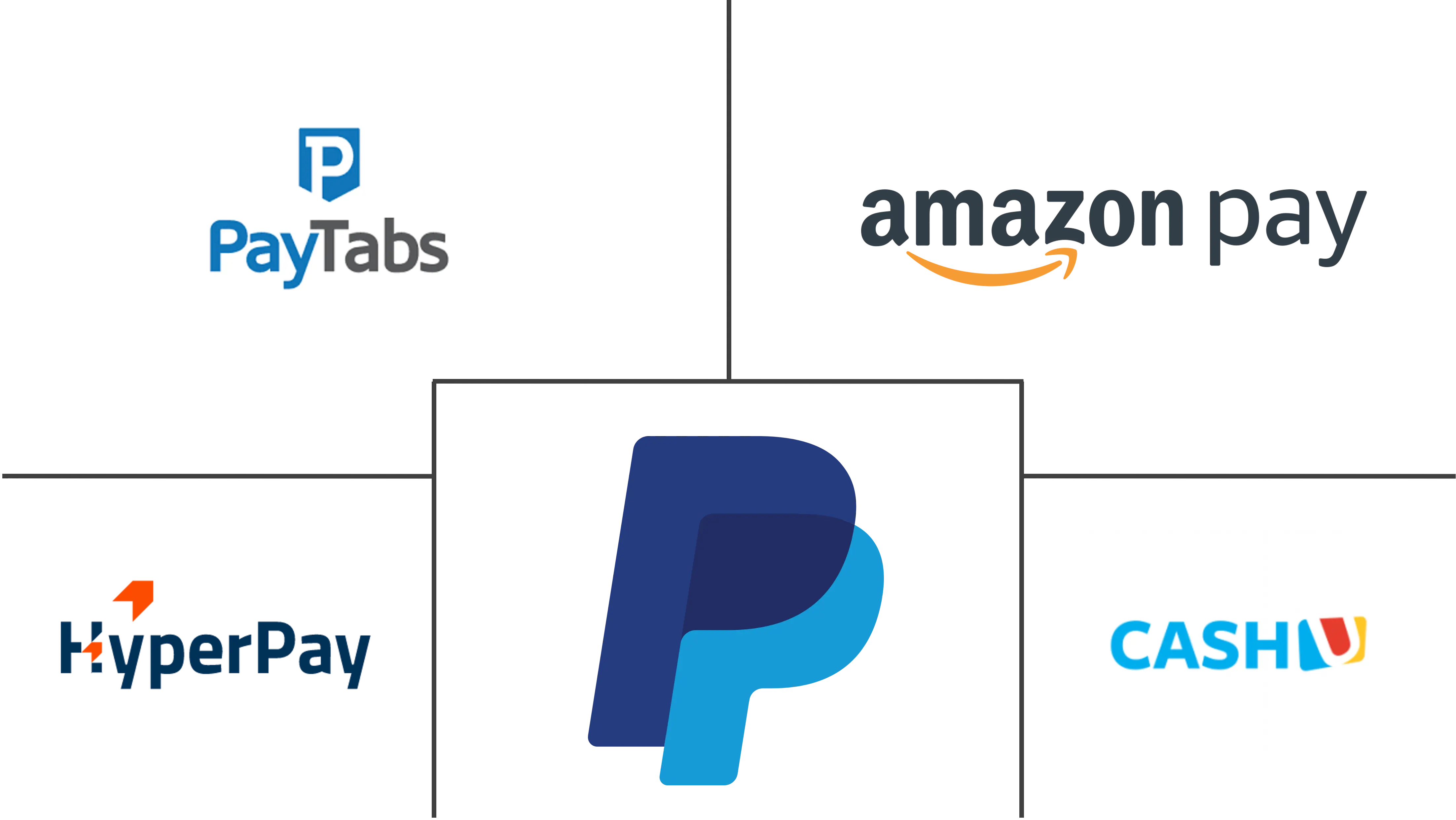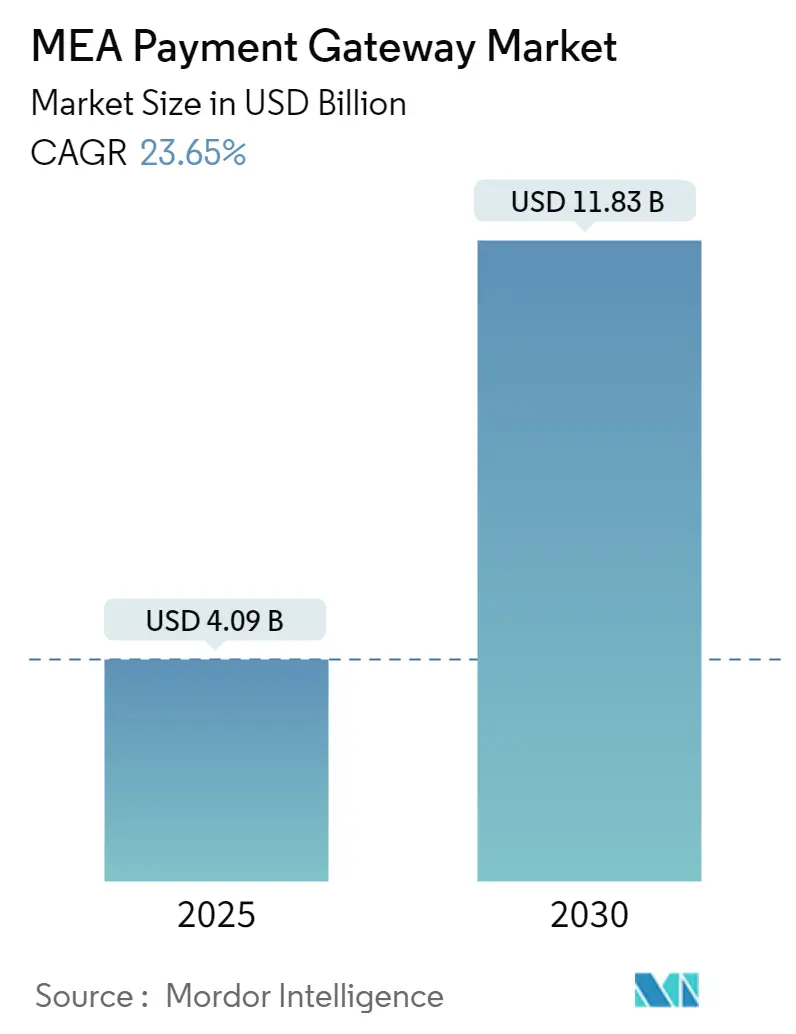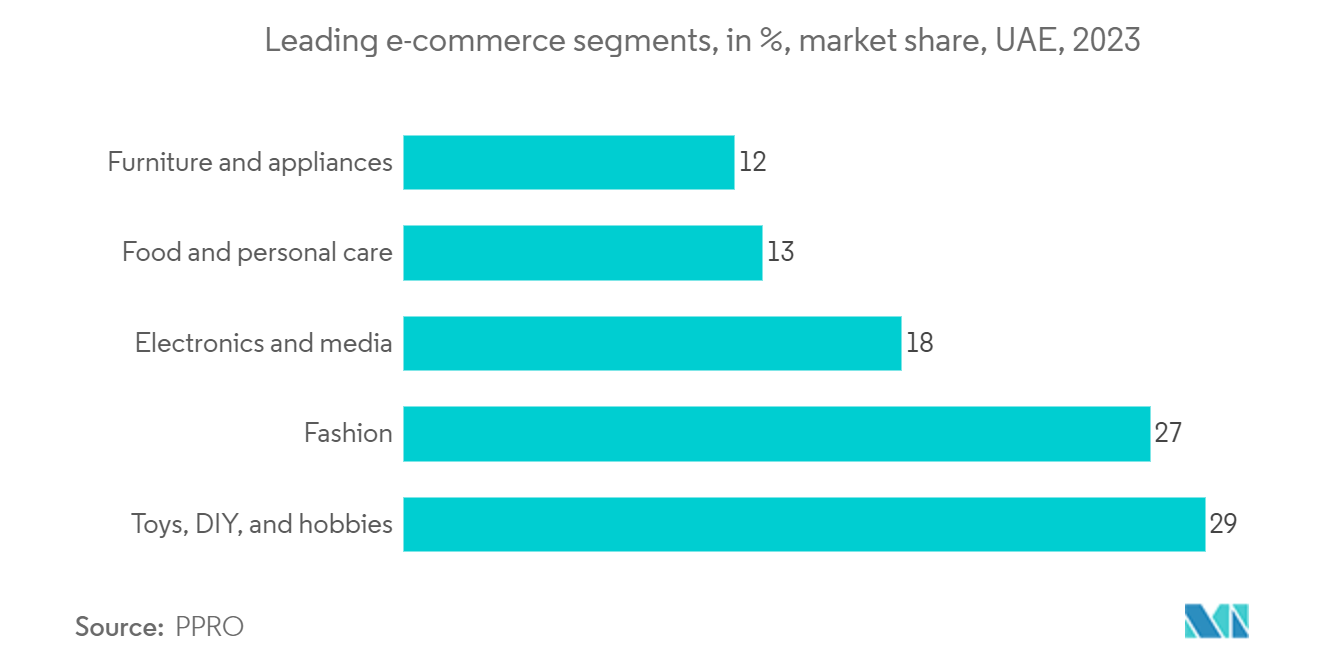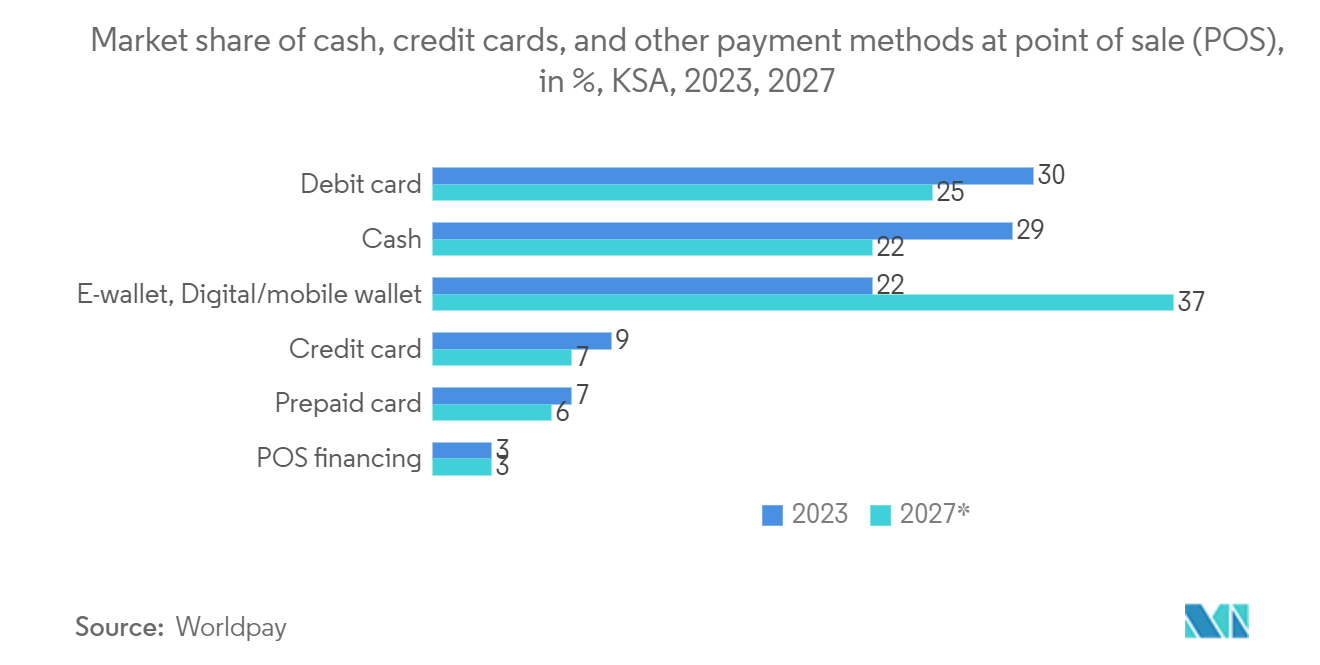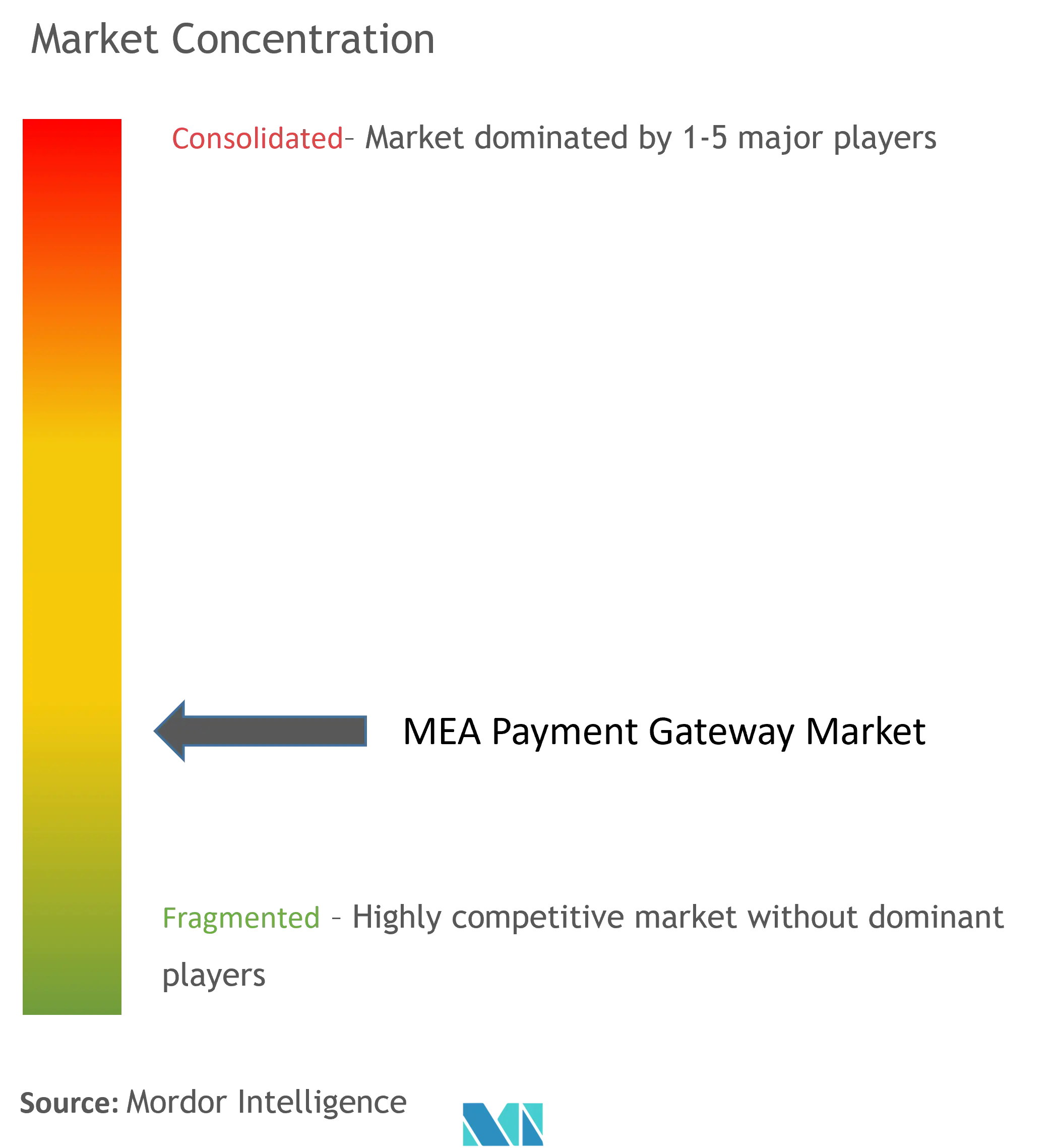MEA Payment Gateway Market Analysis
The MEA Payment Gateway Market size is estimated at USD 4.09 billion in 2025, and is expected to reach USD 11.83 billion by 2030, at a CAGR of 23.65% during the forecast period (2025-2030).
- Driven by rising digitalization and the growth of e-commerce, the payment gateway market in the Middle East and Africa (MEA) is undergoing rapid evolution. As regional businesses increasingly turn to online platforms, the need for secure and efficient payment gateways becomes paramount to ensure smooth transactions. Benefiting from government initiatives promoting cashless economies, the market is witnessing a notable uptick in the adoption of mobile and digital wallets, particularly in emerging economies. However, infrastructure challenges persist as a significant hurdle to growth in certain areas of the region.
- Countries like the United Arab Emirates, Saudi Arabia, and South Africa are witnessing a surge in e-commerce penetration, leading to heightened demand for payment gateways. With a growing number of consumers shopping online, businesses are turning to advanced gateway solutions to ensure secure and seamless transactions.
- The surge in smartphone usage and mobile payments, especially via digital wallets, is propelling the growth of the payment gateway market. Platforms like Apple Pay, Google Pay, and various local wallets are gaining traction, particularly in areas with limited banking infrastructure.
- Through initiatives and policies, governments in the MEA region are championing the cause of cashless economies and digital payment systems. Notable examples include Saudi Arabia's Vision 2030 and the United Arab Emirates' emphasis on a digital economy, both fostering a conducive atmosphere for payment gateway adoption.
- As businesses increasingly adopt payment gateways, the emphasis on enhanced security features like tokenization and encryption has intensified. The demand for secure, PCI-DSS-compliant gateways, which are vital for safeguarding consumer data, stems from businesses' focus on fraud prevention and data privacy.
- Despite the MEA market's vast growth potential, infrastructure challenges, particularly in rural or underdeveloped areas, pose obstacles to the widespread adoption of payment gateways. Issues like inconsistent internet connectivity and limited access to digital financial services can impede market expansion in these locales.
MEA Payment Gateway Market Trends
Increased E-commerce Sales and High Internet Penetration Rate
- As online shopping gains momentum in MEA countries, the demand for payment gateway solutions is witnessing a notable uptick. With businesses increasingly establishing their online presence, the necessity for secure and efficient transaction processing becomes paramount. Notably, countries such as the UAE, Saudi Arabia, and South Africa are witnessing a robust expansion in e-commerce, underscoring the pivotal role of payment gateways in their digital infrastructure, especially for managing millions of transactions daily.
- The UAE e-commerce market caters to a diverse array of consumer needs and preferences. Leading categories in this market include fashion and apparel, electronics and gadgets, beauty and cosmetics, grocery and food delivery, and travel services. Notably, as reported by PPRO, a financial firm, in 2023, toys, DIY, and hobbies emerged as the dominant e-commerce category in the United Arab Emirates, commanding a significant market share of 29%. Fashion closely trailed, securing a 27% share.
- In June 2024, Adyen, a global financial technology platform for businesses, collaborated with noon, an e-commerce platform in the region. This collaboration aims to bolster the region's digital economy. Due to its swift expansion, noon established 'noon payments,' a proprietary infrastructure tailored to its payment requirements. Now, with Adyen's partnership, noon seeks to elevate payment solutions for both merchants and customers in the area.
- With the expansion of internet access across the MEA region, particularly through enhanced broadband and mobile connectivity, consumers are increasingly participating in online activities, including shopping, bill payments, and digital banking. In countries like the United Arab Emirates and Saudi Arabia, where internet penetration is notably high, there's a surge in digital payments. This uptick underscores the growing demand for payment gateways to ensure transactions are processed seamlessly and securely.
- For instance, in 2023, the Aani Instant Payment System saw a surge in activity, with transactions jumping to 64.1 million and a total value of AED 164.7 billion (USD 44.84 billion). This marks a notable increase from 2022 when the system recorded 38.3 million transactions worth AED 101.2 billion (USD 27.55 billion), as reported by the Central Bank of the UAE (CBUAE).
Saudi Arabia is expected to hold a major share
- Saudi Arabia's Vision 2030 strategy seeks to diminish the nation's dependence on oil, steering its focus towards sectors like technology and digital services. In line with this vision, the government has rolled out initiatives championing a cashless economy and bolstering digital payments. This modernization drive is not only accelerating the uptake of e-commerce but also amplifying the demand for payment gateways. Central to this evolution are programs like the Saudi Payments Network (Mada) and the Financial Sector Development Program.
- Saudi Arabia boasts one of the region's largest e-commerce markets, buoyed by widespread internet access and a surge in online retail platforms. With the e-commerce sector's expansion, the demand for trustworthy and secure payment gateways intensifies. Saudi online shoppers increasingly seek seamless payment solutions, propelling the payment gateway market's growth.
- For example, in August 2023, Arabian Business Machines (ABM), a distributor of Toshiba in Saudi Arabia, unveiled its e-commerce platform. This initiative aims to bridge the gap between Toshiba and its end users, offering easier access to authentic Toshiba Toners. This move is set to enhance print quality for professionals and businesses reliant on Toshiba products.
- As the digital landscape evolves, security emerges as a paramount concern for consumers and businesses alike. Recognizing this, Saudi Arabia's regulatory framework underscores the significance of secure transactions. Initiatives are in place to ensure payment gateways align with global security benchmarks, notably the PCI-DSS (Payment Card Industry Data Security Standard). This heightened emphasis on security has catalyzed the swift adoption of digital payment gateways, especially those boasting encryption, tokenization, and robust fraud prevention measures, carving out a lucrative niche for secure payment solutions.
- For instance, data from WorldPay highlights a notable shift in Saudi Arabia's payment landscape: the diminishing dominance of cash at POS. With a growing endorsement of credit cards and mobile wallets, WorldPay forecasts that by 2025, cash will no longer be the predominant payment method in physical stores. This shift is underscored by the anticipated rise in the number of wallet users like Saudi Telecom's STC Pay.
MEA Payment Gateway Industry Overview
The financial landscape of the Middle East and Africa (MEA) is undergoing a significant transformation, primarily driven by the rise of real-time payment solutions. These solutions, celebrated for their swift processing and settlement capabilities, have become integral to contemporary financial ecosystems, delivering unmatched efficiency, convenience, and security to both businesses and consumers. In this evolving scenario, the MEA real-time payments market stands out, showcasing robust growth and a keen adaptability to the digital age's demands. Several factors fuel this momentum: the widespread adoption of smartphones, deeper internet penetration, regulatory pushes for financial inclusion, and a thriving e-commerce sector. As a result, there is a pronounced demand across industries, from retail and banking to healthcare and government, for payment methods that are faster, more secure, and more user-friendly. This demand underscores the versatility and relevance of real-time payment solutions. The competitive landscape of the MEA real-time payments market is vibrant, featuring established giants, budding startups, and forward-thinking fintech firms all vying for a larger slice of the pie. Industry leaders are channeling investments into research and development, aiming to refine their offerings, broaden their geographical reach, and secure a competitive advantage.
The MEA payment gateway market is fragmented with the presence of major players such as PayPal and Amazon Payments Inc. Players in the market are adopting strategies such as partnerships and acquisitions to enhance their product offerings and gain sustainable competitive advantage.
MEA Payment Gateway Market Leaders
-
HyperPay
-
PayTabs LLC.
-
Amazon Payments, Inc.
-
PayPal Holdings, Inc.
-
CashU
- *Disclaimer: Major Players sorted in no particular order
MEA Payment Gateway Market News
- September 2024: Barq, a Saudi financial services startup, is set to enhance its payment acceptance solutions for merchants and consumers by utilizing Mastercard's Gateway technology. Through this collaboration, Barq aims to provide expanded services to Saudi businesses, citizens, and residents, catering to their growing demand for cross-border services and remittance solutions.
- June 2024: CellPoint Digital, a global leader in payment orchestration and a provider of payment solutions to the airline industry, has forged a new partnership with Riyadh Air, the newest national airline in Saudi Arabia. This collaboration will empower Riyadh Air with cutting-edge payment technology, aligning with its digital-first business strategy and setting it apart as it gears up for commercial operations in 2025. Through this partnership, Riyadh Air gains access to CellPoint Digital’s Payment Orchestration platform, streamlining both local and cross-border transaction processing.
MEA Payment Gateway Industry Segmentation
An e-commerce application service provider offers a payment gateway, a merchant service that authorizes credit card and direct payment processing. This service caters to e-businesses, online retailers, brick-and-click entities, and traditional brick-and-mortar stores.
The report covers MEA payment gateway companies, and the market is segmented by type (hosted and non-hosted), enterprise (small and medium enterprise (SME) and large enterprise), end user (travel, retail, BFSI, media and entertainment, and other end users), and geography (Saudi Arabia, Israel, Qatar, Turkey, and Rest of MEA). The market sizes and forecasts are provided in terms of value (USD) for all the above segments.
| By Type | Hosted |
| Non-Hosted | |
| By Enterprise | Small and Medium Enterprise (SME) |
| Large Enterprise | |
| By End User | Travel |
| Retail | |
| BFSI | |
| Media and Entertainment | |
| Other End Users | |
| By Geography | Saudi Arabia |
| Israel | |
| Qatar | |
| United Arab Emirates | |
| Rest of MEA |
MEA Payment Gateway Market Research FAQs
How big is the MEA Payment Gateway Market?
The MEA Payment Gateway Market size is expected to reach USD 4.09 billion in 2025 and grow at a CAGR of 23.65% to reach USD 11.83 billion by 2030.
What is the current MEA Payment Gateway Market size?
In 2025, the MEA Payment Gateway Market size is expected to reach USD 4.09 billion.
Who are the key players in MEA Payment Gateway Market?
HyperPay, PayTabs LLC., Amazon Payments, Inc., PayPal Holdings, Inc. and CashU are the major companies operating in the MEA Payment Gateway Market.
What years does this MEA Payment Gateway Market cover, and what was the market size in 2024?
In 2024, the MEA Payment Gateway Market size was estimated at USD 3.12 billion. The report covers the MEA Payment Gateway Market historical market size for years: 2019, 2020, 2021, 2022, 2023 and 2024. The report also forecasts the MEA Payment Gateway Market size for years: 2025, 2026, 2027, 2028, 2029 and 2030.
MEA Payment Gateway Industry Report
Statistics for the 2025 MEA Payment Gateway market share, size and revenue growth rate, created by Mordor Intelligence™ Industry Reports. MEA Payment Gateway analysis includes a market forecast outlook for 2025 to 2030 and historical overview. Get a sample of this industry analysis as a free report PDF download.

